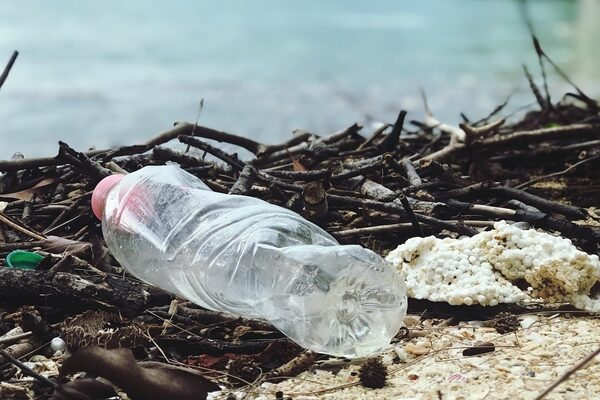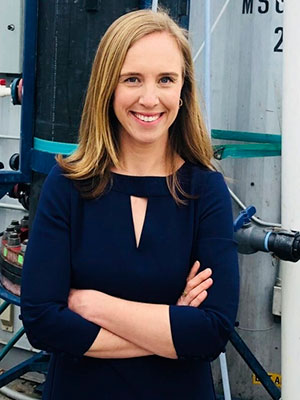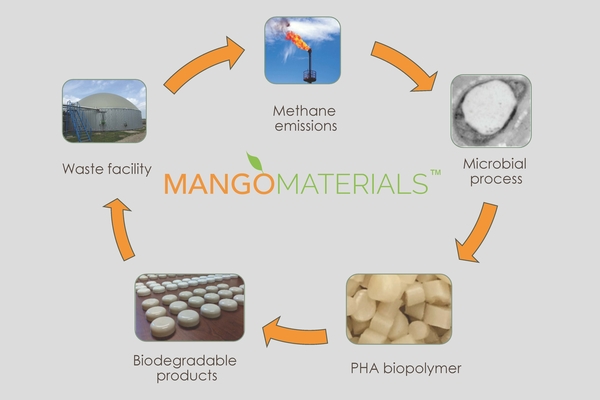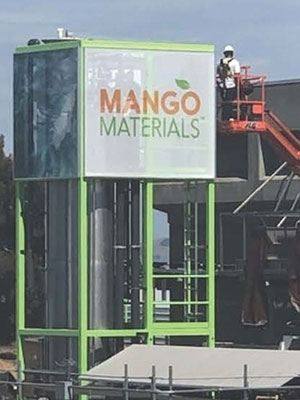Biodegradability: The Future of Plastics

The next big thing in plastics is here and it has the capacity to transform plastic pollution.
Plastics are all around us, even in places you wouldn’t think to look.
While many of us are careful not to litter or buy single-use water bottles, plastic pollution may be occurring inside your own home without you even knowing. For instance, polyester, which is found in many clothes, is essentially a type of plastic. When you wash polyester-based clothing, bits of polyester come off in the wash—a process called microfiber shedding. Those polyester microfibers end up at wastewater treatment plants and polyester water is discharged from the treatment plant into the environment.
The problem with plastics
This is problematic, considering it takes plastics like polyester around one hundred years to biodegrade. Luckily, companies such as Mango Materials aim to speed up the biodegradability of polymers like polyester using a naturally occurring substance known as PHA, which will help apparel like T-shirts to biodegrade in roughly seven weeks.
On a recent Zoom call organized by the Center for Sustainable Global Enterprise as part of its Leaders in Sustainable Global Enterprise speaker series, Molly Morse ’03 (Eng), founder and CEO at Mango Materials, spoke with students regarding the complexity of plastics pollution and what Mango Materials is doing to help.
Innovative technology
A renewable bioproducts company based out of San Francisco, Mango Materials produces a unique type of polyhydroxyalkanoate (PHA) optimized for biodegradation.

“Technically, everything is a little bit biodegradable, but it might only be 3 percent in 100 years,” said Morse. The important thing to understand about biodegradation is that in order for something to completely biodegrade, “it must go back to its end carbon constituents, back to methane or carbon dioxide. So, if the material ends up in the naturally occurring carbon cycle, it can be completely part of nature.”
Mango Materials is able to achieve high levels of biodegradability with their PHA by taking methane and oxygen and feeding it to bacteria to produce their special brand PHA, called P3HP. The company is also able to take granules of PHA and formulate them for specific applications, like making super biodegradable fibers for apparel or injection mold packaging for phone cases.

PHA is special because unlike other widely used biodegradable polymers, PHA doesn’t need to be industrially composted, meaning it doesn’t need extremely high temperatures or heat to break down.
“PHA can break down in home composts and in environments where no oxygen is present, like landfills and wastewater treatment plants. Even if our materials are improperly disposed of and wind up in the natural environment, it can be biodegraded by naturally occurring microorganisms.”
The more companies that integrate Mango Material’s PHA into their supply chains, the more used packaging, old T-shirts, and containers can be melted down, reused, and recycled. But even if consumers don’t recycle, anything made with Mango Material’s PHA will be able to safely and quickly degrade in all sorts of natural environments, like your backyard or local waste facility.
Circular economy
Since the bacteria used to produce PHA feeds on methane, Mango Materials sets up operations next to companies that produce methane (as a by-product) and uses methane that would otherwise be released into the atmosphere in a closed-loop system.

This means Mango Materials is able to turn a harmful greenhouse gas into a material that’s good for the environment.
Mango Materials is pioneering a new technology and commercializing something very few companies are bringing to market. And although this bodes well for the planet, some investors worry about pushing the boundaries of scientific innovation. Investors will often say, “You guys are innovating across everything!”
Morse likes to ask a simple question in return:
“Isn’t that the point?”
—Amanda Hartman ’21 is a writer for the Center for Sustainable Global Enterprise
